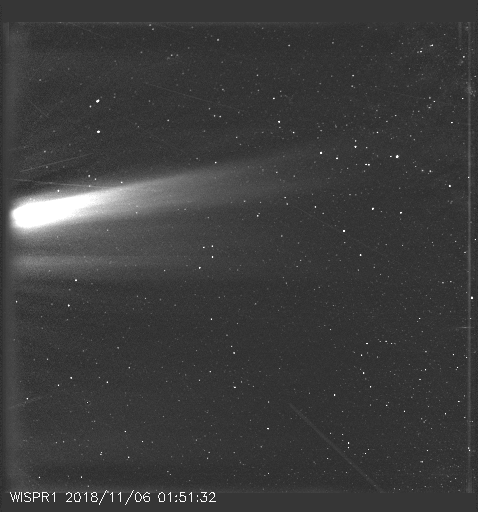On Nov. 12, 2019, NASA’s Parker Solar Probe team released scientific data collected during the spacecraft’s first two solar orbits to the general public.
Data can be accessed through the NASA Space Physics Data Facility, the Solar Data Analysis Center, the APL Parker Solar Probe Gateway, and the Science Operation Centers of the four science investigation teams (the University of California, Berkeley; Princeton University; Harvard-Smithsonian Center for Astrophysics; and Naval Research Laboratory.) The newly released data, in the form of data files and graphical displays, is available for interested public users to manipulate, analyze, and plot in any way they choose.

The released encounter data encompasses measurements made during the first two solar encounters, spanning the time between Oct. 31 and Nov. 12, 2018, and March 30 and April 19, 2019, when the spacecraft was within 0.25 AU of the Sun, as well as data collected at farther distances. One AU, or astronomical unit, is about 93 million miles, the average distance between the Sun and Earth.
Science teams led by principal investigators from partner institutions have been busy poring over the wealth of information collected by Parker Solar Probe in preparation for the mission’s first science results, to be released later this year. The four instrument suites onboard – FIELDS, ISʘIS, SWEAP, and WISPR – have been observing the characteristics of the solar wind (fields, waves, flows, and particles) in the immediate environment surrounding the Sun, called the corona.
“Parker Solar Probe is crossing new frontiers of space exploration, giving us so much new information about the Sun,” said Parker Solar Probe Project Scientist Nour E. Raouafi, from the Johns Hopkins Applied Physics Laboratory, or APL, in Laurel, Maryland, which manages the mission for NASA. “Releasing this data to the public will allow them not only to contribute to the success of the mission along with the scientific community, but also to raise the opportunity for new discoveries to the next level.”
With three of 24 planned solar orbits under its belt, Parker Solar Probe will continue to get closer to the Sun in the coming years, eventually swooping to within 4 million miles of the Sun’s surface, facing heat and radiation like no spacecraft before it. The mission seeks to provide new data on solar activity and how the solar corona works, which contributes significantly to our ability to forecast major space weather events that impact life on Earth. The mission launched in 2018 and is slated to perform its primary science mission until 2025.
By Justyna Surowiec
Johns Hopkins University Applied Physics Lab
